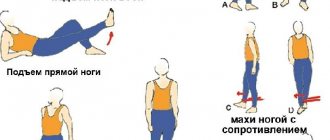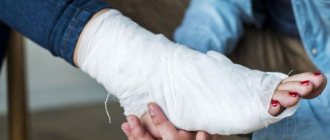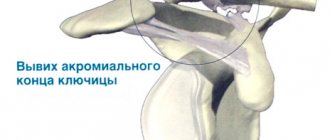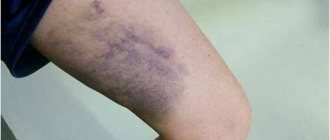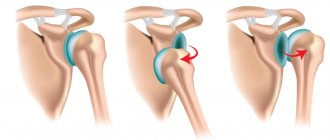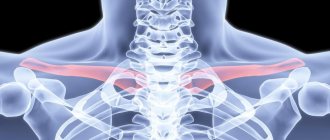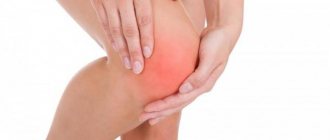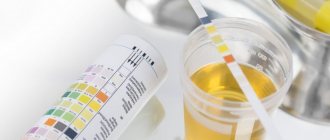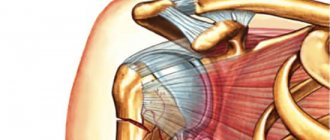Among limb injuries, the most common are dislocations and sprains. Both injuries have similar symptoms - pain, swelling, limited movement. However, the sprain is never accompanied by joint deformation, which is typical for a dislocation. Only a doctor can make an accurate diagnosis, so after an accident you should immediately contact a specialist.
Some useful tips from Grandma Rebecca:
Before providing medical assistance, place a dough made from flour and vinegar on the sprain and bandage it. This will quickly reduce the pain.
Any sprained tendons can be treated with hot milk compresses, changing the compresses as they cool.
Finely chop the onion, mix with granulated sugar and pound well in a mortar. When sprained, apply gauze to the sore spot, on top of which spread a layer of the prepared mixture.
For sprained joints, a hot bath with eucalyptus and knotweed, chamomile or sage is recommended.
Dry extract of barberry helps well in the treatment of bone fractures, dislocations and sprains. To prepare it in spring or autumn, collect bark or young branches of barberry and chop it. Prepare an enamel container and fill the resulting mixture with water so that the raw materials are completely covered. Boil for 40-50 minutes. Then pour the broth into a clean container and settle. Boil the resulting broth over low heat until a thick and dry mass is obtained. During treatment, you need to take thick or dry barberry extract in the form of a pea or wheat grain 2-3 times a day.
What is a fracture?
A fracture is a violation of the integrity of a bone, which is caused by mechanical action or a pathological process in the body. Due to the huge variety of types of bones in the human body, there are many types of bone fractures (see rib fracture).
Types of fractures:
|
|
|
Signs of a fracture
- Pain
- Unnatural limb position
- Abnormal mobility (limb may be slightly bent in an area where there is no joint)
- Visible bone fragments in a wound with an open fracture
- Crepitation (crunching) of small fragments when pressing on a sore spot (this symptom distinguishes fractures from sprains or bruises)
- Swelling in the area of injury
- Hemorrhage and hematoma
- Symptom of axial load (increased pain at the fracture site when tapping along the axis of the limb - for example, pain in the heel when the bones of the leg are fractured)
Treatment of fractures
Fractures are often accompanied by other injuries, skin wounds and bleeding. Therefore, the most important thing is to provide first aid before the doctors arrive. In this case, there is no point in wondering whether a fracture or dislocation caused the pain. First aid will be the same.
First aid:
- If there is bleeding, stop it using one of the following methods: pressing a vessel visible in the wound
- apply a pressure bandage
- apply a tourniquet in case of severe bleeding (indicate the time in the note, keep it for no more than 1-1.5 hours)
- Cover the wound with a clean, or better yet, sterile material.
- Administer painkillers
- Ensure the immobility of the broken part of the body (using splints, fixing the joints located adjacent to the fracture site)
- Apply cold to the injury site
- If the fracture is closed, then you need to start with pain relief
Health care
- Pain relief (often novocaine blockades)
- Comparison of bone fragments and their fixation conservatively (plaster casts, skeletal traction)
- surgically (manually or using special devices, internal or external osteosynthesis)
How to distinguish a sprained ankle from a broken ankle
Dislocation is when a joint moves out of its proper position. In this case, the ligaments are stretched with the possibility of their rupture. The joint capsule can often be damaged. A fracture is a violation of the integrity of bone tissue.
Different mechanisms of injury formation lead to different symptoms, which can be used to quickly assess the situation. To distinguish between these injuries, use the table, which shows a comparison of the main characteristics of an ankle dislocation and fracture.
| Symptom | Dislocation | Fracture |
| Pain due to injury | Acute pain. They appear almost immediately and progress quickly. The pain intensifies sharply when trying to move the leg. | In the first few minutes there may even be no pain due to shock. Later, the pain becomes very severe, not subsiding with passive movements and at rest. |
| The appearance of edema | Swelling appears and grows quickly; the damaged limb differs significantly from the healthy one. | Edema appears in most cases and increases gradually. |
| External deformation | Present in most cases. The foot looks crooked and cannot be returned to its original position on its own. | It may not exist. With closed fractures without strong displacement of the bone, the deformation may be subtle. |
| Pathological mobility | If the ankle joint is damaged or the fingers are dislocated, pathological mobility may be present - the joint does not work properly. | There may be mobility where the bone should be solid. |
| Independent limb movements | Impossible. You cannot lean on your foot; the joint does not perform its functions. | Active movements cause very severe pain. In some cases, the patient may be able to partially rely on the injured foot. |
| Crepitus (crunching sound when palpated) | Absent unless there is associated bone damage. | Present in most cases. |
| External change in foot length | Practically not observed. In this case, axial curvature of the limb is possible. | It is observed quite often. |
The most striking signs of a dislocation are acute, rapidly growing pain, limited mobility, swelling, and hemorrhages are often observed at the site of injury. In most cases, it is impossible to move the foot and you cannot lean on it.
Ankle fracture – there is severe and progressive swelling and pain. In the case of a displaced fracture, deformation of the joint is observed. An open fracture is always characterized by bleeding.
What is a dislocation?
A dislocation is a permanent separation of joint surfaces that are normally adjacent to each other. Usually occurs as a result of mechanical impact (more often in middle-aged men). If the articular surfaces are not completely separated, then this phenomenon is called subluxation. Its symptoms are similar to a complete dislocation.
Signs of dislocation
- Severe joint pain
- Inability to actively move the joint
- Forced position of the limb (least painful)
- Often - external deformation of the joint, relative shortening of the limb
Treatment of dislocations
Trying to cure a sprain at home with poultices, lotions, and compresses is a very dangerous undertaking. A doctor can correct a fresh dislocation (up to three days) much easier than an old one, so every minute after an injury counts. Under no circumstances should you correct a dislocation yourself, as you can worsen the situation by tearing ligaments, muscles, and even breaking a bone. The only thing that can be done is to provide maximum rest to the injured person, apply ice and call an ambulance, or quickly get to the emergency room yourself.
Health care
- Pain relief (often with strong narcotic drugs)
- Repositioning a dislocated limb (there are special techniques for each type of dislocation)
- Applying a bandage to the reduced limb to restrict movement
- Recovery period: physiotherapy, therapeutic exercises.
- Surgical treatment for habitual dislocations (when the slightest injury causes the joint to “pop out” again and again).
How to distinguish an ankle sprain from a sprain
You can distinguish an ankle sprain from a sprain by the clinical picture, namely the intensity of pain, the nature of the injury, and how limited mobility is. But clinical symptoms also depend on the severity of the sprain: the injury can be minor or very serious. When a ligament ruptures, the symptoms of a sprain and a sprain are almost the same.
An ankle sprain is manifested by the following clinical picture:
- In the case of a mild sprain, the pain can be called tolerable, the person is able to move with a limp, but without outside help. The pain intensifies when touching the site of injury or using the injured foot.
- With a second-degree injury, the pain is significantly pronounced, and swelling quickly increases. Pain sensations intensify when a person tries to move the injured leg. In this case, most often it is possible to lean on the foot.
- Ligament rupture is accompanied by severe and sharp pain, a rapid increase in swelling, and the appearance of purple spots at the site of injury, which indicate tissue rupture and bleeding. The joint becomes unstable due to the complete loss of ligament function, it is impossible to lean on the leg, and mobility is sharply limited. The leg may take an unnatural position.
Similar symptoms are observed with a sprained ankle. However, its characteristic feature is a noticeable deformation of the joint - the position of the leg becomes unnatural, the bone is displaced. This symptom allows you to distinguish a sprained ankle from other injuries. The pain is very pronounced, it becomes even more pronounced with active or passive movement of the limb. Only a doctor can make an accurate diagnosis. A severe sprain can be compared to a dislocation in terms of the severity of the injury. In both cases, long-term treatment will be required. You also need to be able to distinguish a foot bruise from a sprain. Read more about foot bruises here.
What is stretching?
Damage caused by traction, and not accompanied by a violation of tissue integrity, is called sprain. Tendons, ligaments and muscles - that is, elastic parts of the body - suffer. Typically, tissue damage occurs in the joint area.
Signs of stretching:
- Pain at the site of injury (especially when moving, repeating the mechanism of injury)
- Swelling
- Sometimes - a slight hemorrhage (bruise, see ointment for bruises)
- Limitation of function of the injured body part
First aid:
- Rest and elevated position of the limb
- Cold to the site of injury (as with bruises)
- Fixing bandage on the joint (elastic bandage)
- In case of severe pain, swelling and worsening of the condition, consult a doctor. More serious injuries have similar symptoms - ligament rupture, for example, which often requires surgical treatment. In addition, it can be difficult to understand whether a sprain or a fracture caused such dynamics.
- There is no need to rub or heat the damaged area for the first 2 days.
Health care:
- Pain relief if necessary
- Physiotherapy after pain subsides
- Gentle treatment for the damaged part of the body
- Recovery usually occurs within 1-4 weeks
. How to diagnose yourself: sprain or fracture?
Bruise is a closed injury to tissues and (or) organs.
Symptoms
: pain (occurs at the time of injury, later felt when palpated), edema or swelling (increases during the day), hematoma (bruise, hemorrhage in the tissue). The range of motion does not decrease - this is the main difference between bruises and fractures and dislocations.
– cold (1-2 days) – to stop internal bleeding;
– rest – a fixing bandage (elastic bandage) to the site of the injury. It is better to keep the affected limb in an elevated position: this reduces swelling;
– warming ointments – for resorption of hematoma. Apply after the swelling subsides (usually after 2-3 days).
Prognosis for recovery
: 1-3 days.
Dislocation is a displacement of the articular surfaces relative to each other. Dislocation can be complete (if the surfaces no longer touch) or incomplete - subluxation (if they partially touch).
Symptoms
: the limb is unusually twisted, the damaged joint has an altered shape, any movement or touch causes severe pain.
Treatment
: An x-ray is prescribed to confirm the diagnosis. Next comes the reduction, which can only be done by a doctor. Remember: relatively painless reduction is possible in the first hours after injury. It is much more difficult to set a dislocation that was three or five days old. After 3 weeks, surgical intervention will be required. After reduction, a control photograph is taken, after which a fixing bandage is applied for 7-10 days.
Prognosis for recovery
: depends on the severity of the disease. Usually 3-4 weeks, during which it is necessary to perform a set of exercises.
A sprain is an injury to soft tissue caused by a sudden and forceful movement in an unnatural direction.
Symptoms
: pain when moving, swelling and hematoma, limitation of movements.
Treatment
: cold and a pressure bandage on the damaged area, ointments with anti-inflammatory and analgesic effects (diclofenac gel, indovazin, troxevasin, indomethacin, fastum gel, etc.). They need to be applied to the site of injury 2-3 times a day, the course of treatment is up to 10 days.
Attention: a ligament rupture is often mistaken for a sprain. To confirm the diagnosis, it is better to consult an orthopedic traumatologist.
Prognosis for recovery
: 1-2 weeks.
Fractures are violations of the integrity of the bone.
Symptoms
: specific crunch in case of injury, acute pain, “marbled” skin at the site of injury, swelling, numbness in the injured limb.
Treatment
: fix two adjacent joints of the injured limb in a motionless position, apply cold and immediately consult a doctor. In medical institutions, a plaster cast is applied. Leg fractures often require traction (attaching a weight to ensure perfect alignment of the affected surfaces). Among the auxiliary methods prescribed are therapeutic exercises, massage, and physiotherapy.
Prognosis: 3-5 weeks after the injury, the ends of the bone fragments are joined together - at this time the plaster is removed. Complete recovery of damaged limbs for hand injuries takes up to 6 weeks, for leg injuries – from 6 months to a year.
“You don’t go there, you go here”
- What if it’s not a dislocation, but a sprain?
-Sprains most often occur in heel lovers - as they say, “twisted my foot on a bump.” Its sign is aching pain, which may subside, and then, with an awkward movement, will torment the person again. A sprained leg can also result in a fracture. To distinguish it from a sprain, apply pressure to both sides of the protruding ankle bone. If there is no pain, you most likely have a sprain. In this case, you need rest, cold compresses immediately after the injury and dry heat the next day.
- What are the signs of a fracture?
— Acute pain, intensifying with exertion, inability to move fingers, swelling. But even if everything seems fine, after a serious fall it is better to see a doctor. Leg fractures can be accompanied by thrombosis, and this leads to blockage of blood vessels and, in case of late consultation with a doctor, to very sad consequences.
— In winter, passers-by are threatened not only “from below”, but also “from above”: they can also suffer from a falling icicle. What to do if a piece of ice falls on a person’s head?
— The advice is still the same: don’t waste time. If you have a cut wound, apply a bandage from available materials, go to the nearest medical facility or even a pharmacy for first aid. Signs of a concussion are: loss of coordination, dizziness, nausea, double vision. At the time of injury, a person may lose consciousness, even if only for a few seconds, and may be tormented by vomiting. In this case, the victim needs to be laid on a bench and something cold applied to the head, and then an ambulance should be called. Be that as it may, be careful when going outside. Watch your step and take care of yourself.
Causes of distortion
The origin of joint sprains is almost always associated with a fall. For example, a person at the moment of falling, in order to avoid hitting his head, stretches out his arms and first of all rests on one or the other hand or both. Thus, the hands take the entire initial blow and, naturally, are subjected to violence and stretching in one or another joint.
If a person hits with the palm of his hand, the hand is forcibly extended at the wrist joint, and this extension can easily go beyond normal limits. Well, in order for the arm to straighten above normal, it is necessary to stretch, tear or tear the ligaments on the opposite, i.e., flexor side of the joint. This is how distortion of the wrist joint occurs.
It goes without saying that if a person hits the back of the hand, then the arm will be forcibly bent at the wrist joint beyond the limits of what is possible. As a result, a sprain of the joint again occurs, but only with a tear or rupture of the ligaments on the extensor side. In the same way, when struck with the inner or outer edge of the hand, it will be forcibly bent in one direction or another with a tear in the ligaments on the side of the wrist joint, which will also entail distortion.
Like the wrist joint, all other joints can be subject to distortion, and in trochlear joints, which allow only two movements - flexion and extension, the distortion is most often caused by lateral movements that are unusual for them, i.e., forced bending of a part to the side.
In this case, the lateral ligaments, which are intended to prevent lateral movements of the joints, are torn or completely torn. Thus, stretching occurs in the finger joints, as well as in the elbow and knee. But increased flexion or extension of these joints beyond the limits of normal mobility can also lead to distortion.
In the lower extremities, sprains can easily occur without a person falling, when he just stumbles. Of all the distortions, the most common is the distortion of the ankle joint, which almost always occurs when a person stumbles, for example, by unexpectedly landing his foot in a hole. Or, instead of the sole, it will stand on the outer edge of the foot - then, under the pressure of the weight of the body, the foot turns even more and can turn the sole up and the back surface down.
You need to see a doctor if:
- Injured head, chest, spine, stomach
- Trauma associated with a child falling from a height (especially in the head area)
- A crash was heard at the time of the injury
- The pain that arose at the time of injury does not subside, but intensifies
- There is a significant wound at the site of injury, bleeding
- Swelling intensifies
- A bruise from a bruise does not “bloom” over time (that is, does not turn yellow), but turns red, and the skin becomes hot.
- There are no active or passive movements in the injured limb
- There is a decrease or complete disappearance of sensitivity in the limb
- The condition worsens (loss of consciousness, decrease or increase in blood pressure, shortness of breath, urinary retention).
Author:
Evtushenko Anna Aleksandrovna obstetrician-gynecologist
Signs of distortion
Signs of distortion vary depending on the degree of tissue damage. With a weak form of distortion, limited only to tearing of the ligaments, all painful phenomena can be reduced to pain and slight swelling. The latter comes from a bruise, which appears blue under the skin if the position of the stretched and torn ligaments is superficial.
For example, after a person stumbles and sprains his foot, pain appears in the ankle joint and a small bruise near one or the other ankle. The pain is usually not so severe that it interferes with walking. In more serious cases, the pain is so severe that the patient cannot move the arm or leg in the damaged joint.
Bruising is noticed not only on the side that was stretched, but also on the other side, which was compressed during stretching; here they often extend far above and below the sprained joint. At the same time, sometimes bruises are revealed by the blueness of the integument not immediately, but after some time, even several days. This depends on the fact that the blood poured into the depths only subsequently spreads to the subcutaneous tissue and becomes visible through the skin.
In the most severe cases of distortion, hemorrhage occurs in the joint (haemarthrosis), and even abnormal mobility in it, consisting in the appearance of such passive movements that are not characteristic of a healthy joint. For example, with knee distortion, lateral mobility of the joint may occur due to a rupture of one or another collateral ligament.
Finally, there are cases where, due to distortion, a bone fracture occurs, for example, when the ankle joint is sprained, a fracture of one or another ankle quite often occurs: this occurs because the ligaments withstand the violence and do not tear, but tear off the piece of bone to which they are attached.
What is a bruise?
A bruise is a closed injury to tissues or organs as a result of mechanical impact. Depending on the location, volume and depth of the damaged tissue, the force of the impact, bruises can have different manifestations. For example, a well-known bruise is a hemorrhage due to damage to blood vessels. The remaining symptoms are also familiar to many.
Signs of injury:
- Pain after mechanical impact
- Swelling (due to edema and hemorrhage)
- Bleeding into damaged tissue (hematoma)
- Increased skin temperature and redness over the injured area
- Limitation of the function of a specific organ or part of the body
Painful sensations arise at the moment of injury, then somewhat dull. But as the hematoma and tissue swelling grow, the pain may appear again with a vengeance. Particularly unpleasant sensations occur in places without a fat layer, on the front surface of the lower leg, for example. Sometimes the pain and swelling are so strong that it is difficult to distinguish between a fracture and a bruise.
First aid:
- Rest for the affected part of the body, its elevated position (raise the limb, lie on the opposite side, etc.)
- Applying a pressure bandage
- On the first day, apply cold (to prevent hematomas). Ice packs must be removed periodically to avoid damaging blood vessels due to low temperatures. It is best to apply an ice pack directly to the pressure bandage for 25-30 minutes, then apply it for 10-15 minutes every 2-3 hours.
- In case of severe pain, swelling, or large bruises, it is recommended to consult a doctor. Specialist supervision may also be necessary for bruises of the head, internal organs and other dangerous locations.
- There is no need to rub the bruise or warm it in the first two days (after 48 hours you can warm it)
- It is important to remember that first aid for fractures and bruises, dislocations and sprains is absolutely identical: rest, cold, pain relief.
Health care:
- The medical institution may prescribe physiotherapy and novocaine blockades for pain relief
- Surgical treatment for severe injuries: puncturing the skin and pumping out blood from large hematomas, clearing fluid from the joint cavity, administering antibiotics.
Prognosis in case of distortion
As for the prognosis, distortions with proper treatment usually end well. Often, already on the 3rd day, all painful phenomena disappear if there was a mild form of sprain and if the patient at that time maintained a calm position of the stretched joint. The more severe the distortion, the longer it takes to heal.
With significant ligament tears and large bruises, you have to stay in bed for 2-3 weeks, and sometimes even a whole month, and walk on crutches if you have a strain on your leg, or keep your arm in a sling or even a splint if your arm is sprained. In those cases when it is accompanied by hemorrhage in the joint, complete rupture of ligaments and, especially, a bone fracture, recovery is delayed for a longer period and can only follow after a month, one and a half or even two months.
Sometimes even after this, in severe cases, rigidity of the joint remains, preventing free movements in it. In other, milder cases, it happens that there remains a tendency in the damaged joint to repeat the distortion; for example, after it the leg easily turns in again. This may occur from lengthening and weakness of the joint when the ligaments first become distorted. Finally, it is not uncommon for cases where inflammation develops after distortion that is not properly treated.
Injuries in children
Children, due to their mobility and immature musculoskeletal system, often receive bruises, ligament damage and even fractures. It is even more difficult to distinguish them at home than in adults. It is difficult for a child to describe the pain; he may be frightened by the injury or the prospect of seeing a doctor. There are the most common injuries in babies that can be suspected at home. But making a diagnosis often requires an examination by a specialist.
Radial head subluxation
Young children, especially girls under 3-4 years of age, often get this type of subluxation when pulling their arms. For example, parents or a nanny pull the baby by the arms to avoid falling. This injury has even been called "nanny's elbow." The main symptom is a click (not always) and sharp pain in the elbow with any movement of the forearm. The baby does not allow him to move his sore arm. If you keep the limbs at rest, the pain noticeably weakens. The doctor at the emergency room usually immediately identifies such a typical injury by the position of the limb, makes a reduction and sends the child home. No additional treatment is required.
Subperiosteal fractures
The bone of a small child has a number of structural features, so they often experience subperiosteal fractures, when the bone is broken but the periosteum is intact. It looks like a green bush branch when you try to break it off. Such fractures are more difficult to diagnose even with x-rays. Only a specialist knows how to distinguish a fracture from a bruise in this case. But bones in children also heal three times faster than in adults, which significantly speeds up recovery time.
Treatment of distortion
Treatment of minor dystories is not difficult. Just rest in the form of abstaining from walking or moving your arms is enough to completely cure the disease within a few days. Unless you have to add to this the use of cold lotions and ointments in the first two days. And for more significant sprains, place the limb in a splint and keep an ice pack on top of the damaged area for the first three days. After this time, the ice is usually canceled and massage begins once or even twice a day.
Massage accelerates the course of the disease by promoting the absorption of bruises. It is beneficial even in the very first time after injury. About a week after the injury, along with massage, you can do gymnastics, making passive movements with your hands in the sore joint. All this helps to absorb bruises and restore normal mobility in the damaged part.
In severe cases of distortion, accompanied by deep ruptures of the ligaments along with hemorrhage into the joint cavity and, especially, bone fractures, it is necessary to ensure complete immobility of the joint by applying a plaster or other fixed bandage, on top of which, again, an ice pack should be placed.
But there is no need to abuse rest and leave a fixed bandage on the injured limb for a long time. In such cases, it is enough to keep your leg or arm in a bandage for one week and no longer than two weeks. Abuse of rest, i.e. keeping the injured part in a fixed bandage for a long time, leads to stiffness of the joint and rigidity of the surrounding parts, which remain for a long time and interfere with movements.
Treatment of joint inflammation that develops after distortion consists of the use of various anti-inflammatory drugs, mainly ointments.
